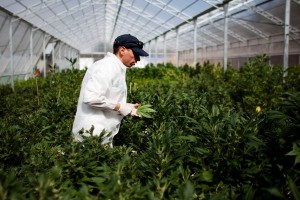 Terra Tech Corp. a leader in controlled agricultural products, announced that it has merged with GrowOp Technology Ltd., a cultivation equipment manufacturer focused on the rapidly emerging medical Cannabis market and maker of “The Big Bud.” Derek Peterson, CEO of GrowOp Technology and newly appointed CEO of parent company Terra Tech Corp., says that traditional urban agriculture shares many of the same technologies and processes that are utilized in the cultivation of medicinal cannabis. Much of the technology that exists today has been funded by commercial cannabis cultivation.“Urban agriculture is a remarkable solution for effectively and efficiently feeding our global population, while delivering a product that is significantly more healthy for both the consumer and the planet,” said Peterson. “If not for cannabis being one of the largest cash crops of this country, the industry would be years behind in technological advancements.”
Terra Tech Corp. a leader in controlled agricultural products, announced that it has merged with GrowOp Technology Ltd., a cultivation equipment manufacturer focused on the rapidly emerging medical Cannabis market and maker of “The Big Bud.” Derek Peterson, CEO of GrowOp Technology and newly appointed CEO of parent company Terra Tech Corp., says that traditional urban agriculture shares many of the same technologies and processes that are utilized in the cultivation of medicinal cannabis. Much of the technology that exists today has been funded by commercial cannabis cultivation.“Urban agriculture is a remarkable solution for effectively and efficiently feeding our global population, while delivering a product that is significantly more healthy for both the consumer and the planet,” said Peterson. “If not for cannabis being one of the largest cash crops of this country, the industry would be years behind in technological advancements.”
“Farming is going both urban as well as vertical, and tools like ours are going to be the staples of this new city-centric approach to agriculture,” said Peterson. “We are excited about the opportunity in this market, especially in terms of consolidation, and we plan to implement an aggressive acquisition campaign now that we are a public company.” “As more cultivation moves indoors, urban farmers need a new set of tools to regulate and manage these operations. The global population is growing exponentially, forcing us to seek out and adopt alternative methods for food production. Indoor, vertical and greenhouse cultivation are potential answers to many of our existing agricultural limitations,” suggests Russell Winnett, COO and lead design engineer of GrowOp Tech.
With a global population of approximately 7 billion, scarcity of food and the resources to produce it are rapidly becoming a concern. This increased need to sustain our population puts a strain on other global resources as the production and transportation of food significantly increases greenhouse gas emissions. Terra Tech believes this coupled with greater access to information and understanding that locally grown produce is not only better for the environment but also has a higher degree of nutrition has led to this current surge in hydroponically grown crops. Terra Tech intends to position itself to capitalize on this “growing” market. Locally grown produce is not only better for the environment but also has a higher degree of nutrition has led to this current surge in hydroponically grown crops.
Solar Power Has Ripple Effect On Job Creation


 Despommier
Despommier